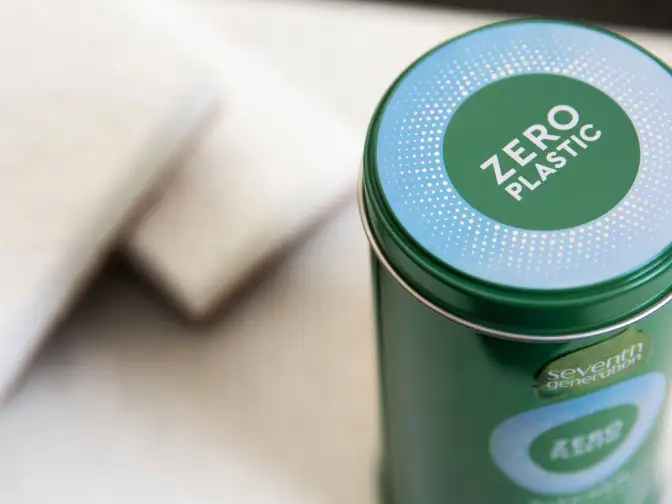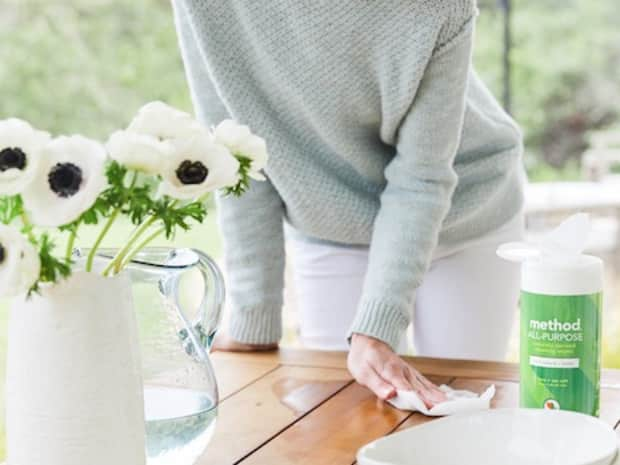
The Germiest Household Items Most People Forget to Clean
The most overlooked things in your home you should be cleaning right now.
Read More

Last Updated: May 3, 2021
Learn how to identify drain flies and use both natural and chemical methods for eliminating these pesky pests from your home.
Have you ever noticed teeny-tiny flying insects gathering around your sinks, drains, and standing water? Most likely, you’ve got yourself a drain fly problem. Here’s how to tell for sure — and what to do about it.
Drain flies go by lots of names — including drain gnats, sewer gnats, sink flies, and moth flies — and these tiny, furry, winged little beasts are exactly as beautiful as they sound.
True flies of the order Diptera, drain flies tend to stay near standing water, because despite being, you know, flies, they don’t actually fly all that well.
Contrary to popular belief, drain flies don’t come up through the drain. Rather, they come in from outside, looking for water — the more disgusting, the better — and once they find it in your drains, they set up residence and gorge themselves on their standard diet of the sewage and bacteria found in these places.
They breed prolifically, and since an individual drain gnat lays and hatches up to 300 eggs in just two days — and the flies can live for up to three weeks — things can get out of hand pretty fast.

Drain flies live and lay eggs both indoors and outdoors, but once they find a suitable spot, they tend to stick around until the resources run out — or until you run them out.
Some of their favorite haunts include:

Drain flies don’t carry diseases or cause any harm to your home or family. But they are kind of gross, and they make general nuisances of themselves — especially when they drown by the dozens in the bottle of wine you forgot to cork last night.
But, if your drain fly problem goes untreated for long enough and proliferates, the flies can spread nests throughout the pipes in your home, costing you a visit from the plumber.
You may initially think you have an infestation of straight-up gnats or fruit flies, but unless your tiny guys are hanging around a surplus of fruits and vegetables in your home, they’re most likely drain flies.
To determine the severity of the problem, cover the drain in question with a piece of clear packing tape overnight. As the flies … hop out of the drain, they’ll stick to the tape, and your level of discomfort with the results should guide your next steps.
Need confirmation on what a drain fly looks like? Take a look at some footage below.

Once you’ve got a positive ID, and you’ve decided the problem isn’t going away on its own, it’s time to get rid of your drain flies and their gross little larvae.
If you haven’t cleaned your drains for a while, now’s a good time to do it. Use a scrub brush and a natural cleaner to loosen and remove any gunk in and around the drain. Pour a big pot of boiling water down the drain, and repeat every day for a few days.
For a more detailed guide to cleaning drains … take a peek at this article.
GROVE DIY TIP
Mix ½ cup of baking soda with ½ cup of salt, and pour it down the drain. Follow that up with one cup of vinegar. Allow everything to sit overnight. In the morning, flush the drain with another pot of boiling water. Repeat this for a few days.

At Grove, we want to be part of the solution, not the problem. We believe using plastic isn’t sustainable — period. Now it's time for you to take action too.
Over the next five years, we're removing plastic from every product we make and sell, like Seventh Generation natural household products. We’re committed to rethinking our products, transitioning our packaging, and leading our industry with full transparency.

For the drain flies that have somehow taken flight and won’t be taken down by your scalding water and your evil concoctions, create a trap by pouring apple cider vinegar into a small glass or bowl. Cover the top with plastic wrap, and punch a few small holes in it with a toothpick or fork. They’ll be able to fly in, but they won’t be able to find the hole to get out.
GROVE QUICK TIP
With the treatment methods mentioned above, most drain gnat problems can be eliminated in a week or less.

Chances are, you won’t need any drain fly treatments beyond the natural remedies — if you’re persistent. But if you do need to ramp up the fight, we recommend you call in a pest control specialist rather than start unleashing store-bought insecticides and other chemicals upon your home.
Not only do professionals have more effective and better-targeted chemicals, but they also use them as sparingly as possible — unlike many homeowners who are known to spray an entire can of lung-damaging bug killer at a single roach or pour a gallon of catastrophically toxic commercial drain cleaner down their sink hole.
If you don’t have vinegar at home, bleach will kill drain gnats, but it’s a potent environmental pollutant, so you’re better off running to the store for vinegar, which is actually more effective for cleaning your drain pipes.
If your only option is bleach, dilute 1 part of it in 10 parts water before pouring it down the drain.
You’ve finally eliminated your drain gnat drama — now keep them away with preventive measures. Because these pests are attracted to standing water, go around your home every day or two, and briefly run water through the drains. Clean your sinks and drains on a regular basis.

The most overlooked things in your home you should be cleaning right now.

When ants come marching in ... learn how to steer ants out of your home with natural repellents—and keep them out.

Protect your family and home with our rundown of the best eco-friendly and natural bug sprays & mosquito repellents.

How to go plastic-free if you're just getting started — and how to level up if you're ready to make a commitment.